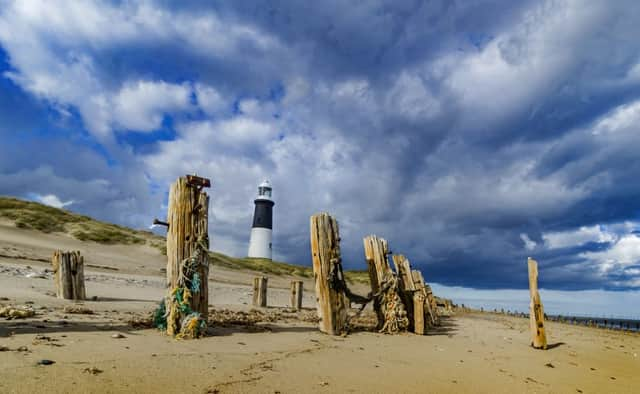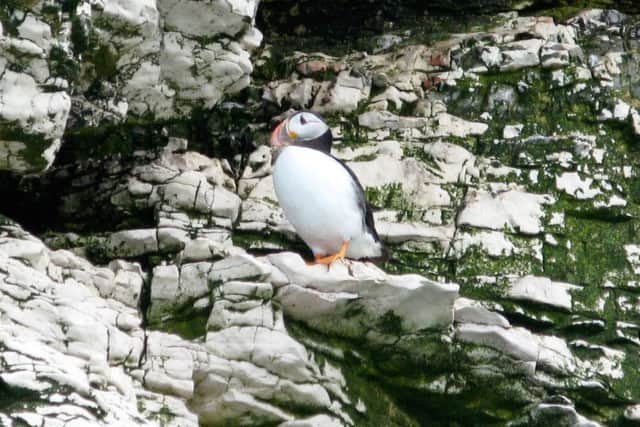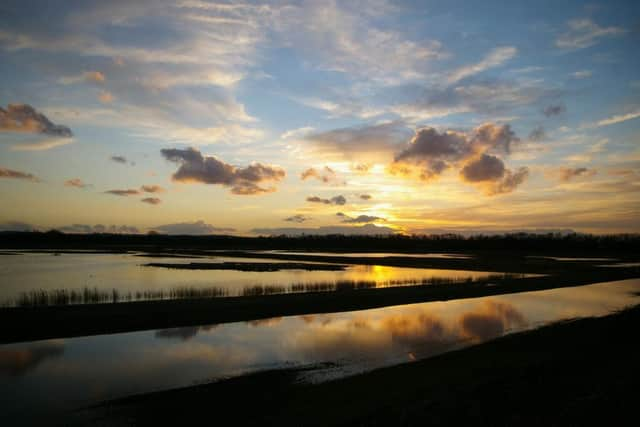A land to treasure: 70 years of preserving Yorkshire's wildlife


Ordinary though it may look to passers-by, Askham Bog had in fact been known to naturalists for several hundred years and in Victorian times they flocked there from all over Britain.
But by the 1940s the 100-acre site was owned by a timber merchant and in a bad way. The wildlife-rich habitat that was once occupied by a lake following the last Ice Age would have declined still further had not two famous confectionery manufacturers in York – Francis Terry and Arnold Rowntree – decided to save it, using money provided for the purchase of nature reserves by the Rothschild banking family.
Advertisement
Hide AdAdvertisement
Hide Ad“Believe it or not, Askham Bog was saved really for its water beetles more than anything else,” says one of the YWT’s trustees, Alastair Fitter. “The best part of the site for the beetles was actually on adjacent land which the council filled with domestic refuse in the 1930s. It was that act of vandalism which made Rowntree and Terry decide that we simply had to protect this place.”


And so the trust – then known as the Yorkshire Naturalists Trust – was formed specifically to look after the reserve. Since then, the YWT has become the second largest Wildlife Trust in the UK, with over 40,000 individual and 120 corporate members, 100 staff and 97 reserves totalling an area covering more than 5,000 acres or the size of 2,500 football pitches.
The reserves range in size from the spectacular spit of Spurn Point at the mouth of the Humber Estuary to just a small field known as Hopyard Haymeadow, near Doncaster, which was bought for the single purpose of protecting a rare wild service tree. Other reserves specialise in chalkland flowers and butterflies in the Yorkshire Wolds. Dedicated conchologists – that’s people who study mollusc shells – are catered for by an extremely rare and minute snail known as Truncatellina cylindrical, which has a solitary Yorkshire outpost at the Brockadale reserve, near Wentworth.
But despite the list of YWT reserves constantly lengthening it is the unspectacular Askham Bog that many members love the most. Much of its character stems from trenches that were dug to extract peat in medieval times and flooded to become what modern naturalists like to call “a biodiversity hotspot”. That’s a great nature reserve to everyone else.
Advertisement
Hide AdAdvertisement
Hide Ad“The whole place is an absolute treasure house,” says Alastair Fitter, and he lists royal fern, saw sedge and bog myrtle among its jewels.


“In the early days of the trust they did what everyone else involved in nature conservation did at that time and just put a fence around it to let nature get on with it. We more or less tried to keep people out. The basic policy, if it was ever written down, could be described as one of benign neglect.”
But now there is a proactive approach to conservation, with teams of wellie-wearing volunteers out at weekends clearing scrub and making sure ponds and ditches don’t clog with vegetation.
The trust’s chief executive, Rob Stoneman, believes Askham Bog encapsulates what the YWT stands for. “I think without Wildlife Trusts, places like the bog would be housing estates by now. In fact, we are currently battering away against a developer who wants to build houses nearby. These battles go on and on around Yorkshire, so we have working for the YWT a team of conservation planners who try to make sure that sites like this are conserved.”
Advertisement
Hide AdAdvertisement
Hide AdThe campaigning and legal side is something that has come to the fore in the last couple of decades as the trust fights any proposed development it deems detrimental to the interests of wildlife. Perhaps the most notable victory, won alongside other conservation bodies like the RSPB, Friends of the Earth and the Wildfowl & Wetland Trust, was recognition of the ecological value of Thorne and Hatfield Moors, to the east of Doncaster, which was threatened by continual peat extraction. The moors are now a National Nature Reserve and one of the few UK nesting sites of the common crane.


Another big change to the trust’s way of thinking is to accept that the general public and wildlife can co-exist, and most of the reserves are geared to attracting visitors. Among them are so-called Gateway sites which are particularly suited to explaining wildlife to school parties and families, the idea being to introduce nature to children in the hope that they will want to become involved in later life. The trust currently has four gateway sites and has ambitions to designate half a dozen more.
One of them is the remarkable Spurn peninsula, which has been one of the biggest challenges to the trust because of damage caused by the sea to the single-track road running down to its tip. A couple of years ago it was wrecked beyond repair and Spurn now effectively becomes an island at high tide.
The trust has at least seized an opportunity from adversity, and now runs what it calls Spurn Safaris in a massive four-wheel drive vehicle that can negotiate the sand and reach the Point. It’s also possible to climb the redundant lighthouse after renovations by the trust, while there are bikes to hire and a new visitor centre planned.
Advertisement
Hide AdAdvertisement
Hide Ad“In the end, the interesting thing is we have managed to save hundreds of sites for nature, fought thousands of planning battles and won major campaigns, yet still wildlife continues to decline,” adds Rob. “How much, much worse it would’ve been without an organisation like the Yorkshire Wildlife Trust is difficult to know. Unfortunately, we’re a long way from stopping this decline because we live in a very managed landscape. We need people to get more passionate about wildlife.”